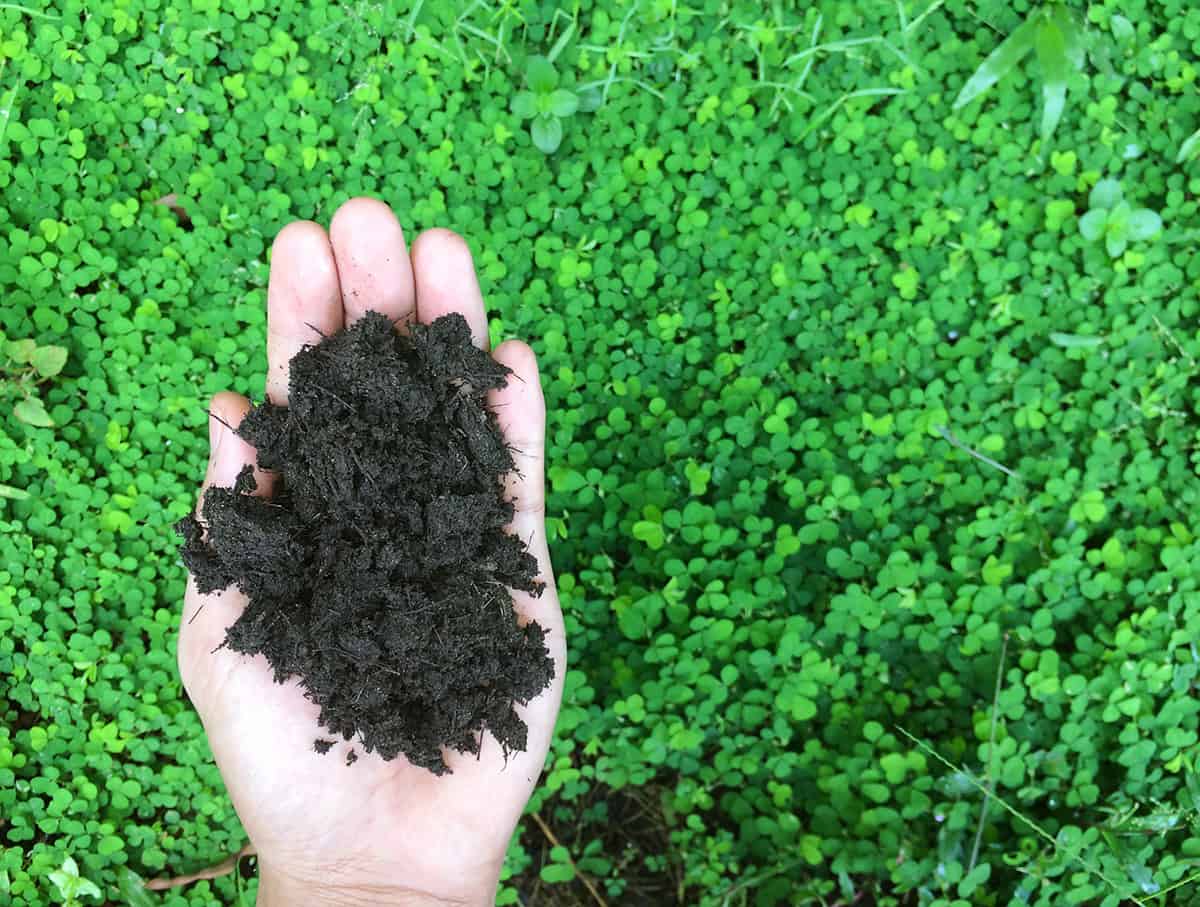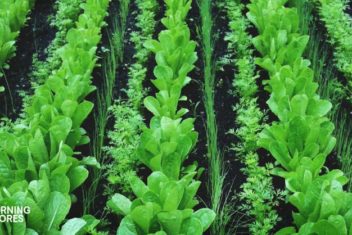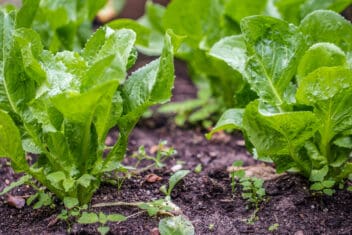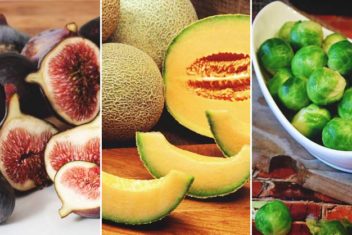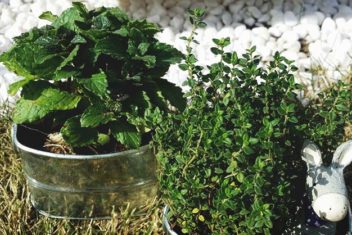Many people add heaps of amendments to their soil in springtime to get their growing beds ready for the season. Others prefer to add piles of horse, cow, and/or sheep manure in the autumn.
This all breaks down (melts?) over the winter. As a result, the soil is refreshed and ready to plant as soon as the snow melts.
There’s another clever way to recharge the soil during the colder months, and that is to sow autumn or winter cover crops.
If you aren’t yet familiar with this glorious concept, make some popcorn and read on.
What are Cover Crops?
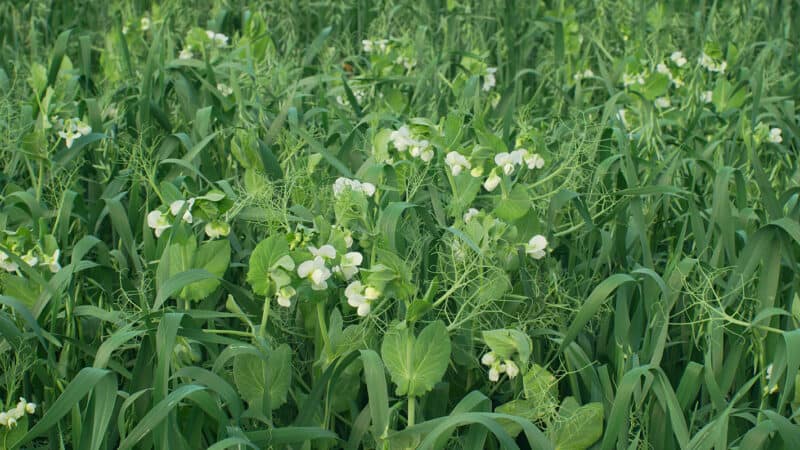
One of the most basic, essential bits of knowledge one can have when it comes to gardening is that plants thrive in healthy soil.
Sure, different species have different nutrient requirements. But even plants that thrive in poorer soils still need some nourishment to draw from. Hence, cover crops.
In simplest terms, think of cover crops as blankets. You’re sowing and growing these solely to cover and nourish the soil, not for any kind of harvest.
You can choose species that best suit your land’s needs. For example, legume crops deposit and fix nitrogen into the soil. This makes them ideal for areas that have hosted heavy-feeding greens over the summer.
Others deposit potassium or phosphorous. Those with expansive root systems are better for fending off soil compaction and erosion.
Since I live on a mountainside, a fair bit of my land is on a steep incline. As a result, every spring thaw results in significant soil loss. This is because we get runoff from 6+ feet of melting snow. That takes a fair bit of soil with it as it rolls down the mountain.
I’ve discovered that planting autumn and winter cover crops like clover and vetch prevent too much soil loss. The plants’ root systems create a sort of web that keeps the soil in place.
Yes, the meltwaters take some of it as tribute. But I lose about 70% less than I would without these crops’ help.
Continued Productivity During the Slow Season
Think of cover crops as assistants that nourish your soil while you’re cozied up in hygge-land for wintertime. During the “down season”, many gardeners feel frustrated at the lack of productivity on the homestead.
With these crops, there’s still a whole lot of work being done while snow is on the ground. Just not by you directly. You’re enlisting the help of plant allies to replenish the earth. In turn, it’ll help feed you and your family once the weather warms up again.
Do you use crop rotation as a means of keeping your planting areas healthy? If so, you can incorporate these autumn and winter cover crops as part of your rotation routine.
Keep a journal detailing which crops you sowed over the winter, and then take note of whether the subsequent harvest fared better or worse because of them.
When to Sow Cover Crops
Depending on the species you plan to grow, autumn and winter cover crops can be sown any time between late summer and late fall. Basically, aim for 4-6 weeks before your first expected frost date.
Since you’re just growing these to nourish the earth, plant them so they have enough time to grow at least a few inches tall before you cut them down.
Take note of how well (and how quickly) your chosen crop(s) grow in your particular region. Plants that grow slowly in zone 3 or 4 may bust into action if you’re in zone 8. It’s important to sort this out in advance because you don’t want a fast-developing crop to explode into seed when you look away for a moment.
That will make next season’s weeding efforts a million times more stressful.
Slower-growing annual legumes, like peas, won’t be too much of an issue because of how long their seeds take to develop. Meanwhile, a short-lived perennial like red clover will come back again for a few years, but shouldn’t interfere with your vegetables.
In fact, it may help to attract beneficial pollinators.
Choosing Autumn and Winter Cover Crops
Just like any other gardening endeavor, it’s important to do some solid research about cover crops before deciding which is best for your land.
Let’s take a look at some of the more popular species:
Austrian Winter Peas (Pisum sativum)
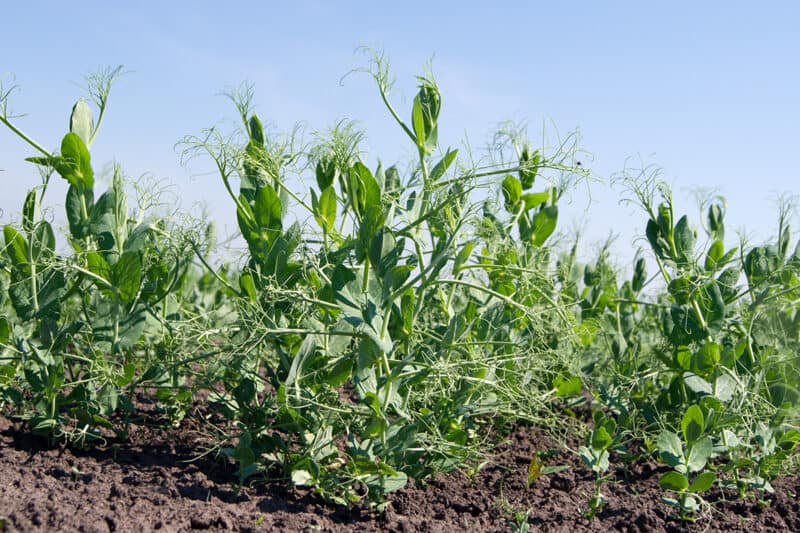
These adorable field peas are some of the best nitrogen fixers around. Furthermore, they’re ideal for amending soil used to grow cereal crops.
Wheat in particular thrives after autumn or winter pea cover crops, so if you’re cultivating that grain (or spelt, or einkorn), you may be pleasantly surprised at your success.
Not only do winter peas dump all that nitrogen into the soil, but they also help to create biomass, and improve moisture retention.
If your area is prone to drought, you may discover that next spring and summer’s soil stays a lot more moist and pliant. It works best when turned under, but also does well as a mulch.
Sow as late summer starts to flow into early autumn. This allows the peas to establish themselves well before you mow them into oblivion.
Buckwheat (Fagopyrum esculentum)

Buckwheat grows really quickly, which makes it ideal for areas that have a short growing season. Sow it about 5 weeks before your first frost date, as this gives it enough time to mature a bit before you cut it down.
Now, buckwheat flowers very quickly and easily, so it’s important to mow it before the flowers mature. Otherwise, they’ll go to seed in the blink of an eye, and you’ll have a hearty buckwheat crop to contend with next spring.
Although this crop isn’t ideal for nitrogen-fixing nor biomass, it’s great to combat soil erosion. This is because buckwheat creates a dense, fibrous root system that can help keep your soil from blowing or washing away.
Oats (Avena sativa)
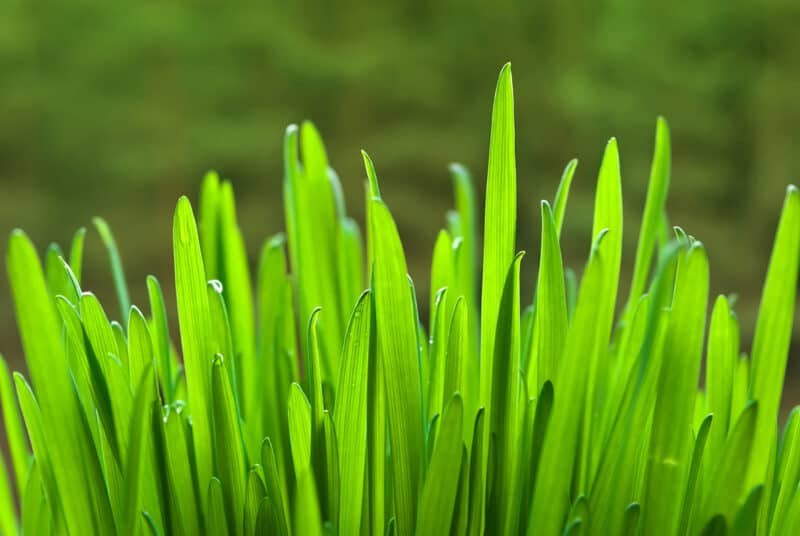
This is the ideal crop to plant if you’re looking for good mulch. Oats create a dense, thick carpet when they’re young, and since you’ll cut them down early, they won’t have a chance to seed themselves. They hold onto moisture well, so they’re great for amending dry, depleted soils.
You can also grow oats in springtime, especially in an area where you’ll be cultivating summer annuals.
Sow them generously as soon as the soil is workable, then cut them down and turn them under about three weeks before your planting date. This makes a great, nourishing bed, especially for nightshades like tomatoes, peppers, and eggplants.
Red/Crimson Clover (Trifolium incarnatum)
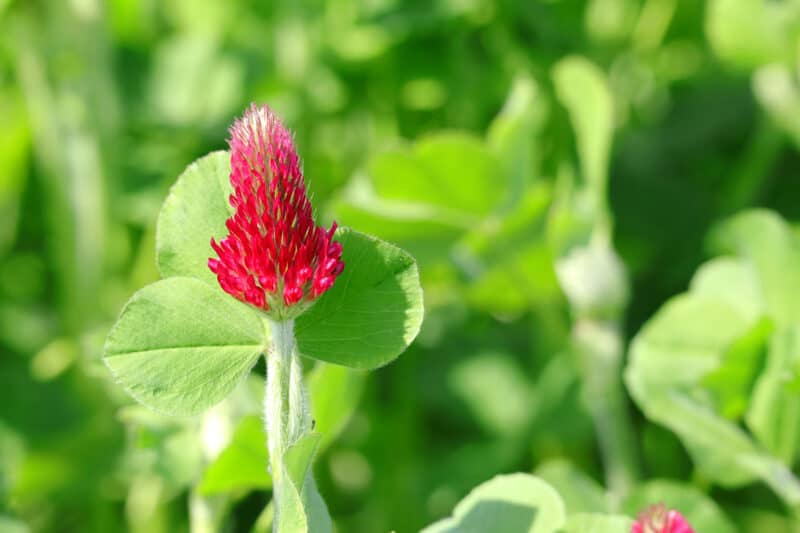
Sow your red clover any time from late summer onwards. If you harvest early, the clover will have enough time to flower. This will provide local pollinating insects with some additional nourishment before wintertime.
Since clover is also a legume, choose this particular cover crop for areas that need some extra nitrogen.
For example, if you’ve grown a lot of leafy greens like spinach, chard, kale, and/or lettuces, use clover to replenish all the nitrogen that those plants have hoovered up all summer.
Winter Barley (Hordeum vulgare )
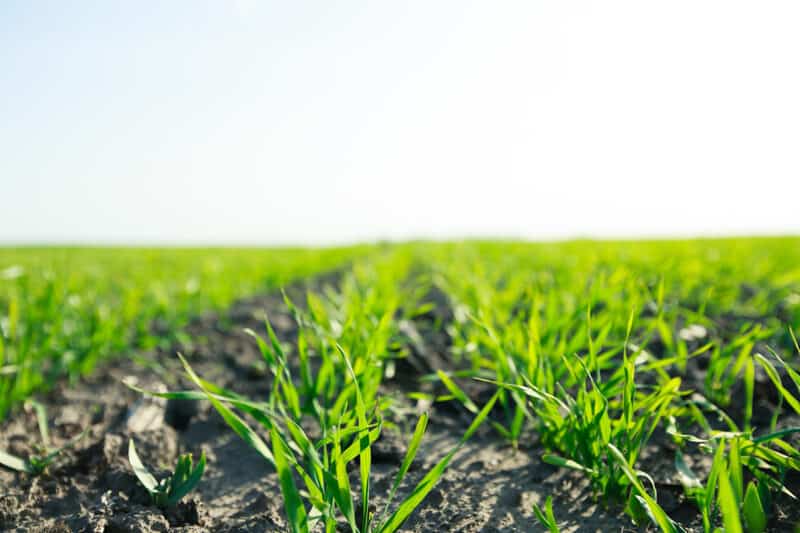
Barley is one of the most affordable autumn or winter cover crops, as it’s both low-cost and highly effective. It’s also perfect for treating depleted soils quickly. It’s a fast-growing crop, it fixes nitrogen, and it creates biomass.
Mmm. Biomass.
Although winter barley grows in pretty much any zone, it seems to do best in cool, dry regions. This makes it ideal for northern gardeners, as well as those in higher elevations that get less precipitation. Quite simply, barley doesn’t like to get too wet.
Bonus: this species is also known to suppress root-knot nematodes. Since tomatoes and roses are both prone to these jerks, try planting winter barley in areas where you plan on cultivating either. Or both.
Winter Rye (Secale cereale)
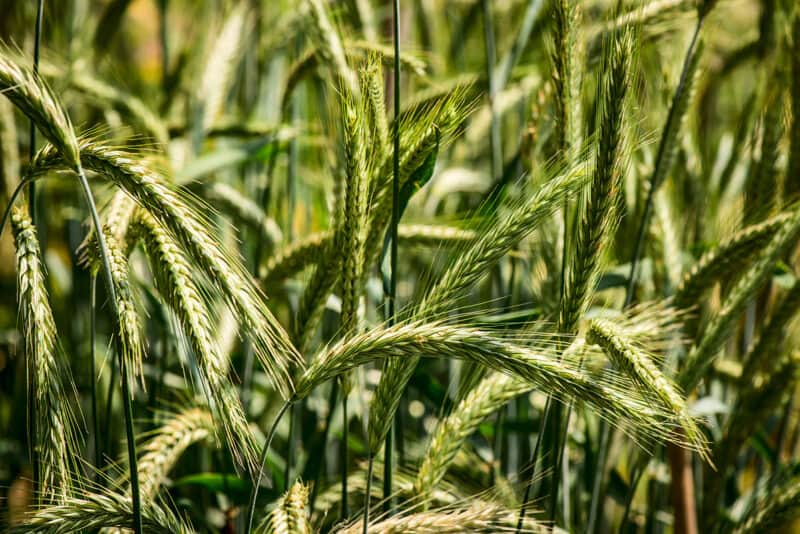
This annual grain is one of the cover crops I use to combat erosion on my land. It’s one of the fastest-growing species I’ve come across and thrives as well in my cold little zone 4b garden as it does in luscious zones 8–11.
Rye creates long, deep roots very quickly, which is why it’s so effective at maintaining soil health and quality. Additionally, if your soil is prone to compaction, rye’s roots can help provide aeration and drainage.
Cut or Turn Under?
Well, this depends entirely on your preferred gardening method. For example, if you’re cultivating a no-dig or hugelkultur garden, you’re not about to take a rototiller to your cover crops.
My favorite method is to go nuts with my push mower and cut everything down before it’s had a chance to flower. This ensures that the cover crops I’ve planted don’t go to seed and establish themselves in amongst my vegetables and herbs.
Once everything is cut down, I leave it in place to break down. We get a startling amount of snow here in rural Quebec, and winter lasts until late April. As a result, the crops I cut down in early November have tons of time to break down.
Other people prefer to use that aforementioned rototiller to both cut the crops down and work them right into the soil. This works better for zones 8 and above. The warmer winter will help to accelerate decomposition, and you’ll be able to get new crops into the soil as soon as it’s properly workable.
Whichever cover crops you choose, they’re bound to have a beneficial effect on your land. Soil gets depleted every season, but these helpful plants can replenish even the most tired garden beds.
Try to sow your autumn cover crops just before a rainfall. This way, the seeds get watered into place and won’t get blown away or eaten. Aim to mow or rototill before expected rain or snow for the same reason.
Then, sit back and let that lovely plant matter do its thing.
